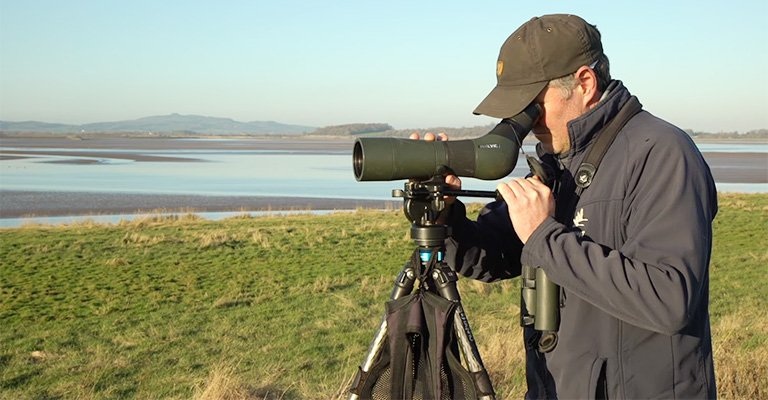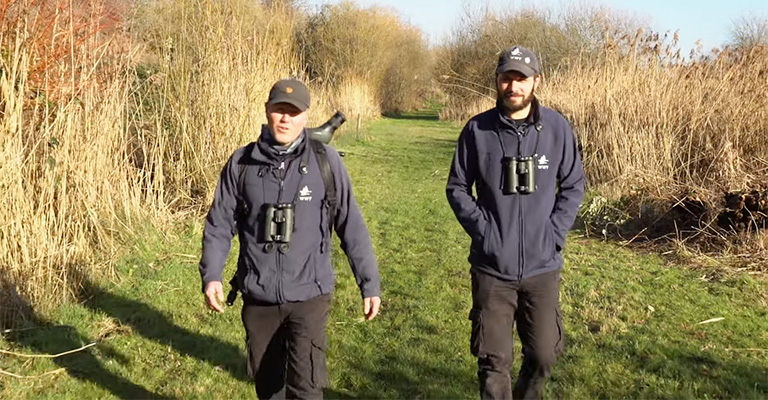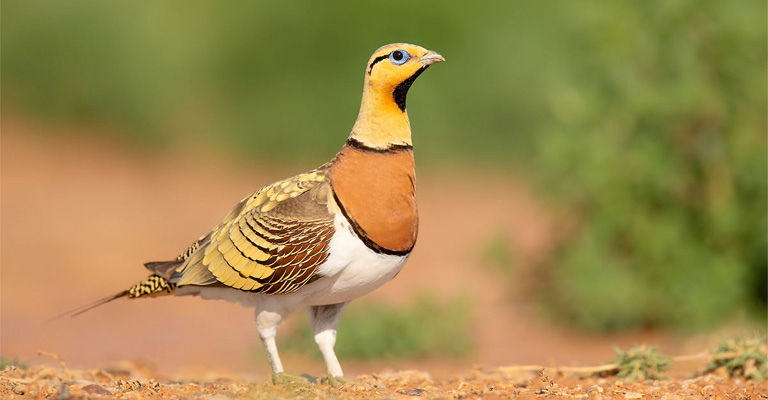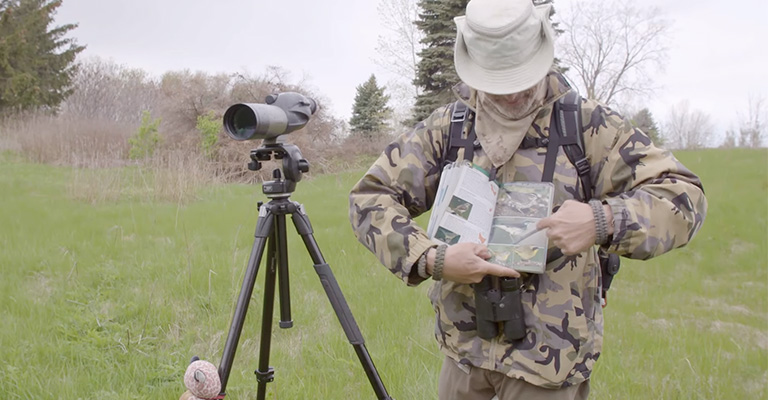Birdwatching, often dubbed “the gentle pursuit,” is a captivating hobby that offers a profound connection to nature’s wonders. As urbanization encroaches on natural spaces, more people are seeking solace and inspiration in the world of avian wonders.
Getting into birdwatching is an enriching journey, an exploration of feathered beauty that requires little more than curiosity and a willingness to step outside.
This introduction will serve as your guide, offering valuable insights on How to get into bird watching.
We’ll discuss essential equipment, ideal locations, and the sheer joy of birdwatching as we help you spread your wings and take flight into this fascinating hobby.

How To Get Into Bird Watching?
Getting into birdwatching is a rewarding and enriching hobby that allows you to connect with nature and observe the fascinating world of birds. Here are some tips to help you get started:
Invest in Binoculars
High-quality binoculars are essential for birdwatching. Choose a pair with good magnification (8x or 10x) and a comfortable grip. Binoculars help you see birds up close without disturbing them.
Get a Field Guide
Purchase a field guidebook specific to your region. These guides provide detailed information about local bird species, including their appearance, habitat, and behavior. They’re invaluable for identifying birds.
Join Local Birdwatching Groups
Find local birdwatching clubs or online communities. Connecting with experienced birders can offer guidance, companionship, and opportunities to learn from others who share your passion.
Learn Bird Calls and Songs
Recognizing bird calls and songs greatly enhances your birdwatching experience. Consider using smartphone apps or online resources to help you identify the sounds you hear in the field.
Choose the Right Location
Visit bird-rich habitats like parks, forests, wetlands, or even your own backyard. Different habitats attract diverse bird species, so exploring various environments can lead to a wider array of sightings.
Practice Patience
Birdwatching requires patience. Birds may not always be readily visible, so take your time and be prepared to wait quietly in one spot for a while. The reward of a rare sighting is well worth it.
Keep a Birding Journal
Maintain a birding journal or use a birding app to record your observations. Note the date, location, species seen, and any interesting behaviors you witness. Over time, your journal will become a valuable resource and a testament to your birdwatching journey.
Remember, birdwatching is not just a hobby; it’s a way to connect with nature, reduce stress, and cultivate a deeper appreciation for the world around you. Enjoy the journey as you discover the diverse and captivating avian world.
Where Do You Start Bird Watching?

Birdwatching can be enjoyed in a variety of locations, from urban parks to remote wilderness areas. Here are some places to start your birdwatching adventure:
Local Parks and Green Spaces
Begin your birdwatching journey close to home by exploring local parks, nature reserves, and green spaces. These areas often host a wide range of bird species, making them ideal for beginners.
You can easily visit these spots regularly to observe seasonal changes in bird populations.
Backyard Birdwatching
Your own backyard can be a fantastic place to start. Set up bird feeders and birdbaths to attract a diverse array of birds. You’ll have a front-row seat to observe their behaviors, and it’s a convenient way to hone your identification skills.
Wildlife Refuges and Sanctuaries
Wildlife refuges and sanctuaries are dedicated to preserving natural habitats and are often home to numerous bird species. These protected areas offer a chance to witness birds in their undisturbed environment. Check local listings for nearby sanctuaries.
Nature Centers and Botanical Gardens
Many nature centers and botanical gardens create habitats that attract a variety of birds. These venues often offer guided birdwatching tours, educational programs, and exhibits to enhance your experience.
National and State Parks
These protected areas can provide an immersive birdwatching experience. Trails, lookout points, and visitor centers in national and state parks are excellent places to spot a wide range of bird species. Research the parks in your region to plan your visits.
Coastal Areas
Coastal regions are home to diverse birdlife, including seabirds and shorebirds. Head to the beach or estuaries to witness flocks of gulls, terns, and waders. Keep an eye out for migratory birds passing through during different seasons.
Forests and Woodlands
Explore forests, woodlands, and wooded trails for a chance to observe woodland birds like warblers, woodpeckers, and owls. These habitats offer a serene and peaceful environment for birdwatching.
Remember to bring essential gear like binoculars, a field guide, and a notepad to document your sightings.
As you explore these diverse habitats, you’ll gradually build your birdwatching skills and develop a deeper appreciation for the avian world around you.
Why Do You Love Watching Birds?

Here are some common reasons why many people love watching birds:
Connection with Nature
Birdwatching allows individuals to connect with the natural world. Observing birds in their habitats brings a sense of peace and harmony, reminding us of our place within the larger ecosystem.
Beauty and Diversity
Birds come in a stunning array of colors, shapes, and sizes. Their plumage and behaviors showcase the incredible diversity of life on Earth, making birdwatching a visually captivating hobby.
Mental Relaxation
Birdwatching promotes mental relaxation. The focused yet tranquil activity encourages mindfulness, reducing stress and calming the mind as you immerse yourself in the present moment.
Educational Value
Birdwatching is a continuous learning experience. It provides opportunities to expand knowledge about different bird species, their behaviors, migration patterns, and the ecosystems they inhabit.
Physical Activity
Birdwatching often involves hiking, walking, or exploring outdoor environments. This physical activity contributes to a healthier lifestyle while allowing enthusiasts to enjoy the great outdoors.
Social Connection
Birdwatching can be a social activity. Many bird watchers join clubs, attend group outings, or connect online to share their experiences and observations with like-minded individuals.
Conservation Awareness
Birdwatchers often become advocates for conservation. Witnessing firsthand the beauty of birds and their habitats can inspire a desire to protect these environments and the creatures that inhabit them.
While I can’t personally experience the joys of birdwatching, I can certainly appreciate the reasons why so many people find it to be a fulfilling and enriching hobby.
What Should You Wear For Bird Watching?

Proper clothing is essential for a comfortable and enjoyable bird-watching experience. Here are the clothing items to consider:
Neutral-Colored Clothing
Opt for neutral colors like brown, green, or gray to blend in with the natural surroundings. Bright colors can startle or disturb birds, making it more challenging to observe them up close.
Lightweight and Moisture-Wicking Fabrics
Choose lightweight, moisture-wicking fabrics for your clothing. These materials help keep you cool and dry in various weather conditions, preventing discomfort from sweat or rain.
Layered Clothing
Layering is key for adjusting to changing weather. Wear multiple layers, including a moisture-wicking base layer, an insulating mid-layer, and a waterproof or windproof outer layer to adapt to temperature fluctuations.
Comfortable Footwear
Sturdy and comfortable footwear with good traction is essential for long walks and uneven terrain. Waterproof boots are particularly useful for wet or muddy environments.
Wide-brimmed Hat
A wide-brimmed hat provides shade from the sun and helps keep the rain off your face and neck. It also reduces glare, allowing you to spot birds more easily.
Sunglasses
Polarized sunglasses not only protect your eyes from the sun’s UV rays but also reduce glare on water surfaces and enhance your ability to see birds in bright light conditions.
Insect-Repellent Clothing
In areas where insects are a nuisance, consider clothing treated with insect repellent or apply repellent to exposed skin to prevent discomfort from bug bites.
By wearing the right clothing, you’ll be better prepared for a day of birdwatching, ensuring your comfort and helping you blend into the natural environment to observe birds without disturbing them.
FAQs
How do I start birdwatching if I’m a complete beginner?
Start by obtaining a pair of binoculars and a field guide specific to your region’s bird species. Familiarize yourself with common birds and their habitats. Begin birdwatching in your backyard or a nearby park, where you can easily observe local species and practice identification.
What time of day is best for birdwatching?
Early morning and late afternoon are prime times for birdwatching when birds are most active. During these periods, they feed, sing, and engage in various behaviors. However, you can observe birds throughout the day, as different species have varying activity patterns.
Do I need to be an expert in bird identification to start birdwatching?
No, you don’t need to be an expert. Birdwatching is accessible to all skill levels. Begin by learning a few common species, and gradually expand your knowledge. Field guides, smartphone apps, and online resources can assist with bird identification.
Where are the best places to go birdwatching?
Ideal locations include local parks, nature reserves, wildlife sanctuaries, and wetlands. These areas often host diverse bird populations. Additionally, explore different habitats like forests, wetlands, and coastal areas to observe a variety of species.
How can I meet other birdwatchers and learn from experienced enthusiasts?
Join local birdwatching clubs, online forums, or social media groups dedicated to birdwatching. Attend group outings, workshops, and birdwatching events to connect with experienced birders who can provide guidance and share their knowledge.
Conclusion
Birdwatching is more than just a hobby; it’s a doorway to a deeper connection with the natural world. It teaches patience, mindfulness, and a profound appreciation for the beauty and diversity of birdlife. As we conclude our exploration of how to get into birdwatching, remember that the journey is as important as the destination.
Whether you start in your backyard, local parks, or venture into more distant habitats, every observation adds to your understanding of the avian world.
Through the lens of binoculars, the rustling of field guides, and the whispers of leaves in the breeze, birdwatching opens a window to a realm that captivates the senses and nurtures the soul.
So, pick up those binoculars, don your comfortable attire, and step into the world of birdwatching. Your journey promises not just a hobby but a lifelong passion for the winged creatures that share our planet.